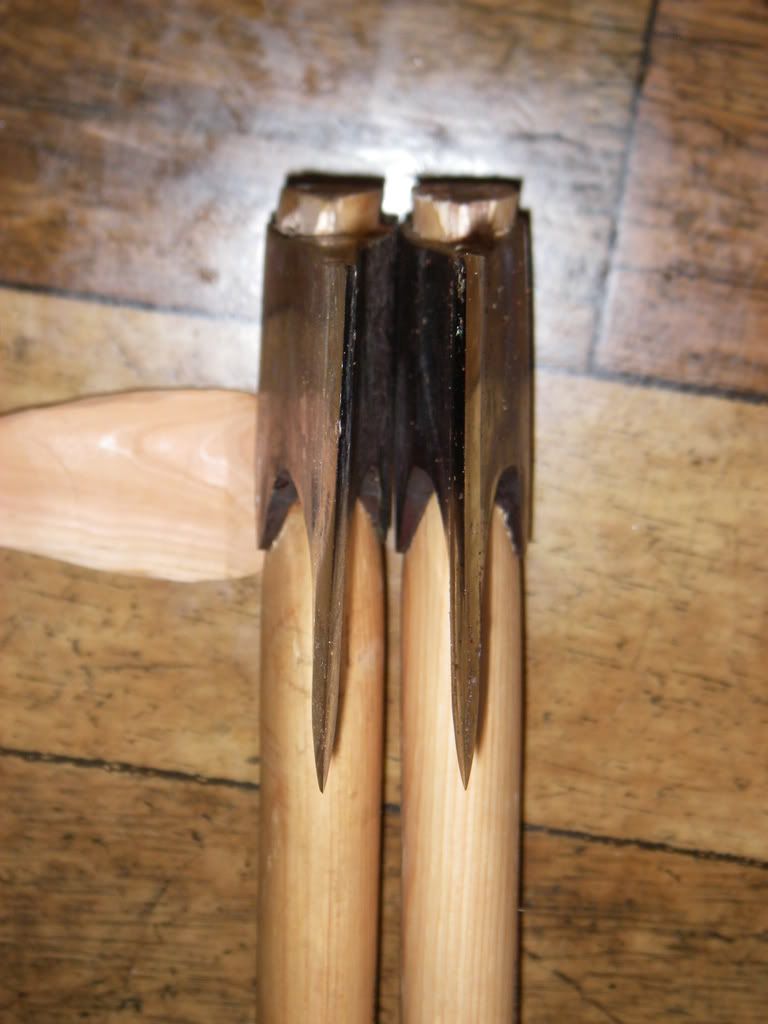
As I'm the only one so far who's used the axe in question, I'd like to clear a few things up.
Firstly, although I have a normal job and a normal house, I use an axe almost every day from October to April to split logs and chop kindling for my woodburner. For this I use an axe made by CK with a similar length helve to the SFA, but with a heavier ( perfectly aligned ) head, that I paid less than £20 for.
When I bought the SFA, I was looking for an axe about the same length that I had at home, but with a lighter head. After reading lots of reviews on here and elseware, it seemed that in the size that I wanted. the SFA was the canines cahoonies.
I duly ordered the axe, and when it arrived I used it to split a few logs at home ( which, although it's not designed as a splitting axe, it did well enough with seasoned, sawn logs ).
After this, it was stored with my canoe camping kit and taken, but not used, on a few trips.
When I eventually started to use it for chopping fine kindling, the misalignment of the head made itself immediately obvious. Quite a few people here have said that the alignment of the head isn't too important. All I can say is that if it isn't, why is the importance of the alignment stressed in the Axe Book provided by GB, and how did I notice it, when I'd never checked an axe's alignment until I used mine and felt that it wasn't right?
In my opinion, the argument settler is the above photo. Not only does it show the misalignment, but it also shows the difference in the thickness of the metal on either side of the head. Would you be happy if you'd have paid nearly fifty of your Hard Earned Notes for something like that?
